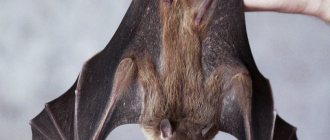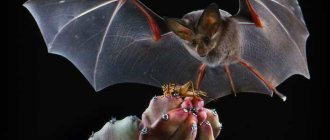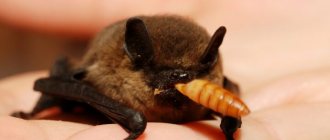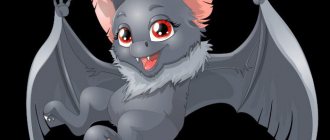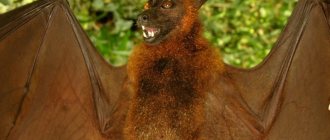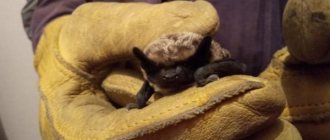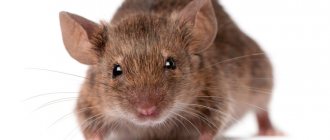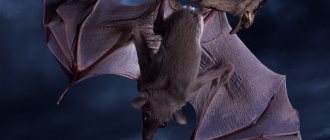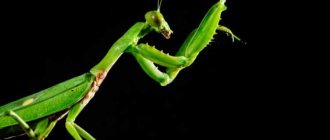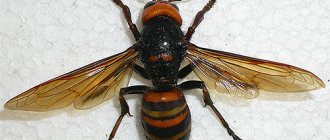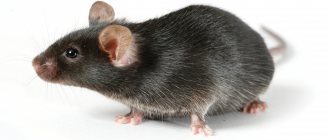Chiroptera - belongs to the class mammals. They are capable of flight thanks to modified forelimbs and use flight as the main method of movement.
Chiropterans and birds are the only representatives of chordates that inhabit the air. At the same time, birds are active during the day, and bats at night, which eliminates competition for occupied space. There is a separate science of chiropterology .
Order Chiroptera - bats
Why mouse?
Bats are the only mammals that have mastered the air environment thanks to the presence of wings. In addition, the bat is not related to the terrestrial mouse either in origin or in lifestyle.
What species is a bat? It belongs to the order Chiroptera , the name of which speaks for itself. Why are bats called mice? It was named a mouse for its distant resemblance to a land rodent and the ability to make sounds similar to a mouse squeak.
general characteristics
Bats are the only mammals that can fly. There are many differences within the species, including in appearance, lifestyle and size. For example, the smallest species is the hog-nosed bat, its body dimensions do not exceed 3.3 cm, and its weight does not exceed 2 g. The wingspan is approximately 16 cm. The hog-nosed bat is not only the smallest in the order Chiroptera, but also among the ten smallest animals on the planet. The largest representative of the order is considered to be a giant false vampire, its body length is about 40 cm, its wingspan can reach 75 cm, and the weight of a mature individual is from 150 to 220 g.
Within a species, mice differ not only in appearance, but also in the structure of their teeth and skull. These features were formed due to evolution and the way of nutrition. Bats have a heterodont dental system, like other mammals. The dental formula consists of canines, incisors, molars and radicular teeth.
Recommended by topic
Fox Panda Lynx
For example, mice that feed only on nectar, like the long-tongued leafnoses, have elongated bones on the facial part of the skull. This feature allows it to accommodate a long tongue, with the help of which the species extracts nectar from flowers.
Insectivorous varieties, which feed on insects with dense chitinous shells, have larger teeth and longer fangs. With their help, mice can bite and chew solid food. Those species that eat mainly soft insects have less developed teeth.
Mice that eat plant fruits have cheek teeth that resemble mortars and pestles. They do not need sharp fangs; they use their molars to grind fruit pulp.
Vampires differ from other species not only in structure, but also in the number of teeth. This species has only 20 teeth, while others have 38. This difference is again explained by the way they feed. Vampires make a puncture in the victim's skin and attach themselves to the wound. They do not eat insects, fruits or other food, so the remaining teeth are less developed. But the front fangs are quite long and sharp.
Elena
Ask a Question
Question to the expert
How long do bats live in the wild?
The average lifespan depends on the species. In their natural environment, mice live from 4 to 20 years. The maximum recorded age is 33 years.
Most species have large ears, which help bats navigate in space.
The size of the ears and the structure of the nasal projections directly affect echolocation. All species have unique hearing, with the help of which insectivorous and predatory species can hear the rustling of insects' wings or detect their movement under a layer of fallen leaves.
Bats have a tragus. This is a unique cutaneous-cartilaginous growth at the base of the ear. This process greatly enhances hearing and perception.
Mice also have a well-developed sense of smell. Individuals are able to find relatives and cubs only by smell. And also find prey and fruits under a thick layer of foliage. Using their sense of smell, mice can distinguish a stranger or find a mating partner at a distance of several hundred meters.
In contrast to the sense of smell and hearing, vision in bats is rather poorly developed. According to research, mice are color blind and see everything in black and white. But this does not mean that they are blind, it’s just that smell and hearing are more important than the visual picture.
All bats have relatively short bodies.
Most have fluffy fur, but there are completely hairless varieties. The tails also have significant differences, for example, in bagwings the tail is partially hidden in the interfemoral membrane, only a small tip sticks out.
In mousetails, the tail hangs freely behind the back, while in bats, it is completely hidden in the membrane.
During evolution, the forelimbs were transformed into wings, but did not lose their main function. This is why bats are often called chiropterans. The humerus became shorter, and the fingers, on the contrary, became longer. During the formation process, the fingers became a kind of frame for the wing, but the first finger with a rather impressive claw remained free.
With the help of a “free” finger, mice move along tree trunks and move along horizontal surfaces. They also pull, pick out and hold food and prey.
The size of the wings affects maneuverability and speed during flight. The shorter the wings, the slower the animal will fly, but the turning speed and overall maneuverability will be very high.
The highly elongated wings do not allow maneuvering in the treetops, but with their help the bat can develop impressive speed in open space.
Average flight speed is from 11 to 55 km/h. The fastest flyer is considered to be the Brazilian folded lip, which can accelerate to 160 km/h. This makes it the fastest flying creature on the planet.
The hind limbs of flyers also have differences.
Recommended by topic
Woodpecker Puma Cow
The paws of the bats point with their knees back and move wide apart to the sides. They have not changed like the front ones and have not lost their functionality, but in some species the flying membrane reaches the base of the foot.
Due to the structure of their hind limbs, bats can hang upside down and move along horizontal and vertical surfaces in any direction.
Depending on the species, the body of bats can be completely covered with short or long fur. In some varieties, fur covers the front and hind limbs. In the natural environment, there are at least two hairless species that have only a few hairs left on their bodies.
Fur colors can be the most unusual and depend on the species, lifestyle and habitat. The main colors are dark brown, brown and black with a brown or grayish tint. But there are also white, beige, red and yellow colors.
Appearance
Bat, description: most of the animal’s body is devoted to the wings . If you do not take them into account, you can note a miniature body with a short neck and an elongated head. The mouth slit of the animals is large , through which sharp teeth can be seen.
Some types of bats charm people with their pretty faces, while others frighten them with their unusual nose shape , disproportionately large ears and amazing growths on the head.
The cutest bat of the fruit bat family is considered to be the fruit dog : it has large open eyes and an elongated nose, similar to a fox. Interestingly, the names of some types of mice were given based on the shape of the animals’ noses: pig-nosed, horseshoe-nosed, smooth-nosed.
The white bat has a kind of “horn” on its muzzle, giving its nose the shape of a petal. Thanks to this device, the animal's forward-facing nostrils capture odors faster and more efficiently .
The bulldog mouse has a no less : on its muzzle in the transverse direction there is a cartilaginous fold running above the nose from one ear to the other. The cartilaginous roller brings the edges of the ears together, increasing their area for more perfect hearing, necessary for orientation in space during flight.
The large ears of the long-eared bat are an equally effective acquisition for chiropterans for perfect echolocation . The frightening appearance of vampires served as the basis for legends that predatory flying bats are capable of attacking humans in search of fresh blood. Is this true or a myth? Read the article about bat bites.
You can “read” about the mouse’s lifestyle and even nutrition by looking at the animal ’s face For example, fruit lovers do not need the powerful locators needed by flying representatives that traverse their surroundings at night. But their nostrils are wider: they look for food, focusing on smells .
Way of life
Despite the fact that the order Chiroptera consists of a huge number of species that live in different natural conditions, their way of life differs little from each other.
Bats live in flocks: in the places where they have settled, there are from fifty to one hundred flying animals per square kilometer. They lead a nocturnal lifestyle, because it is during this period that it is easier for them to get food for themselves and hide from enemies; during the day they sleep, hanging upside down. Relatives communicate with each other using both ultrasonic and ordinary sounds.
In addition, if bats live in temperate latitudes, during the cold period of the year some species go into long-term hibernation (for example, the pipistrelle bat). Before falling into torpor, the animals, hanging upside down, wrap themselves in their wings, as if in a cloak, and press closely together to reduce heat loss.
As a result, the metabolic rate and breathing intensity decrease, the heart begins to beat less frequently, and the body temperature drops to zero degrees. The animals wake up no earlier than the warmth arrives (in some cases they are able to sleep for up to seven months).
True, not all inhabitants of cold latitudes hibernate: some of them migrate far to the south, and an interesting fact is that winged animals, like birds, fly in constant routes, fly away at the same time, and always come to breed home.
Reproduction
Despite the fact that bats do not live long, on average about five years, the ability to reproduce comes late, at the age of two years, pregnancy lasts 16 weeks, and the female gives birth to only one baby.
This is due to their way of life. A pregnant female needs to continue active flights in search of food, and the baby is born rather large: its size is 25% of the mother’s body. Having been born, at first, until he learns to fly, he remains on his mother’s back, and she has to carry her baby during the flight.
Another interesting fact is that temperate bats give birth once a year, mostly in late spring/early summer: at this time their food, insects, appears in abundance. At the same time, in tropical latitudes, where food is constantly available, bats breed twice, and some species even three times a year.
During childbirth, females bend the interfemoral membrane in such a way that a kind of cradle is obtained into which the baby is rolled out (this is especially true for species that give birth upside down, for example, eared ones).
Despite its large size, the cub is born naked, blind, without hair, its mouth resembles a narrow slit, and its ears resemble crumpled paper. Its paws and thumbs are very large and already equipped with claws, with which it clings to its mother’s fur with a death grip. The remaining fingers, between which the membrane is located, are still undeveloped. But such a disproportion does not last long: the baby grows up quickly, and his body soon acquires the desired shape, and his wings grow (young animals begin their first flights at the age of 3 to 6 weeks).
Nutrition
The question of what bats eat has been worrying the minds of a huge number of people for more than a millennium, and many are convinced that bats feed only on human blood.
In reality, everything is not so scary: only three species of mammals feed on blood, and even those are found in southern Africa and the South American continent. Vampire bats feed mainly on the blood of animals and rarely attack people: having made a cut in the skin with sharp teeth, they greedily drink blood (do not suck), which flows without stopping, since their saliva contains a component that prevents blood from clotting. Despite the fact that the bites are painless, they are dangerous because the animals are carriers of rabies.
The rest of the bats are safe for people and even beneficial, since most of them are insectivores. In an hour of hunting, one animal can eat about two hundred mosquitoes. Larger species, for example, the largest bat in the world, the false vampire, hunt frogs, small birds, and lizards. Some species eat fish, and among them there are those that also hunt relatives that belong to other species.
Interesting facts about raccoons95714.714
An equally interesting fact is that among bats there are also vegetarians who feed exclusively on flower nectar, berries, fruits, pollen, and nuts. Animals that prefer the nectar of flowers not only feed on them, but also pollinate them (the length of the tongue of these creatures is ¼ of the body length).
Structure
Birds have adapted to flight thanks to lightweight cellular bones, air sacs in the lungs, and feathers that are heterogeneous in structure and function. Flying bats do not have all this , and the skin membranes can hardly be called wings.
How do bats fly? The flight of mice is similar to the flight of the flying machine of Leonardo da Vinci , who adopted from nature the idea of the structure of the wing of a flying mammal.
A solid membrane of skin, impenetrable by air, “covers” the air masses from above, which allows the animals to push off from them and fly.
What do they eat?
Bats can be roughly divided into insectivores, herbivores and bloodsuckers. Some species feed exclusively on insects or nectar and fruits. Others may combine two types of nutrition. For example, piscivores, in addition to insects and fruits, can eat small fish and crustaceans.
Blood-sucking species or vampires feed on the blood of wild and domestic animals. They make small punctures in the skin and suck blood.
Poll: What did you like most about bats?
They are quite interesting creatures.
0%
I liked their unusual appearance.
0%
I liked the miniature mice, the size of a large insect.
100%
They have an interesting lifestyle and specific behavior.
0%
I didn't like the bats.
0%
Voted: 1
Skeleton and wings
The skeleton of a bat has its own characteristics. The limbs of bats are modified: they serve as the backbone for the wing . The humerus of these animals is short, and the bones of the forearm and the last 4 fingers are elongated in order to increase the area of the flight “mantle”.
A fibrous skin fold is stretched from the neck to the fingertips of the animals. The thumb with a prehensile claw is not included in the wing; the animal needs it for grasping . The rear (interfemoral) part of the membrane is stretched between the hind legs and the long tail.
See what bat wings look like in the photo below:
Where do they spend the winter?
In the winter months, when there is a complete lack of food supply, some bats migrate south, and the majority fall into a state of suspended animation (evening bats, bats, bats, bats).
During hibernation, the bat's body temperature drops to 1-3 degrees, and the heartbeat and breathing slow down significantly.
Before wintering, mice accumulate fat, which accumulates in the upper back. They look for shelter in caves, tree hollows, and under the roofs of houses. The time at which bats hibernate depends on the region and climate conditions. The duration of hibernation ranges from 3 to 8 months.
Flight
The arm with the wing is driven by several paired muscles of the upper girdle, which, to reduce energy consumption for flight are attached not to the sternum, but to the fibrous base of the wing. The keel of the sternum of animals is inferior in power to that of birds: only one muscle necessary for flight is attached to it - the pectoralis major.
The flight speed of animals usually does not exceed 20 km/h . The record holder is the Brazilian folded lip: its flight speed reaches 100 km/h. Some species are able to fly away for the winter , covering more than 300 km . Read about how bats winter.
The spine of flying mammals is more mobile than that of birds . It allows mice to be more maneuverable outside the air.
Dimensions and weight
The length of the tiny body of the animals inhabiting Russia usually does not exceed 5 cm , the wingspan of the smallest of them is 18 cm. The weight of the record-breaking little ones is 2-5 g.
Long-eared mice, white mice and pig-nosed mice are small in size. A representative of the latter species is considered one of the smallest mammals on Earth.
Large individuals weigh up to a kilogram. The distance between the tips of the toes of the front paws with the wings spread can reach one and a half meters, and the body length can be 40 cm. Fruit bats, South American false vampires, are considered real giants among bats.
Sense organs
Bats' response to light: The bat's retina lacks cones , the receptors responsible for daytime vision.
Their vision is twilight and is provided by rods. Therefore, during the day, animals are forced to sleep , since in daylight they see poorly.
Some representatives have eyes covered with bizarre folds of skin. This once again confirms the hypothesis that mice do not orient themselves in space using a visual analyzer . Close relatives of bats, fruit bats, also belonging to the order Chiroptera, have cones. These animals can also be seen during the day.
The secondary role of the visual analyzer for animals was revealed during a simple experiment : when the animals were blindfolded, they did not stop navigating their surroundings. When the same was repeated with the ears, the mice began to bump into walls and objects in the room.
Bats bring undoubted benefits to gardens and farms. In the dark, when birds are inactive, they massively destroy not only insect pests, but also small rodents. Read our articles about what these mysterious animals eat and what their habitat is.
How do mice see in the dark?
How do bats navigate in the dark? What sounds do bats make? The amazing ability of bats to fly and get food without vision was revealed after using sensitive sensors it was possible to record the ultrasonic signals that the animals emit during flight.
The ultrasound of bats, which is inaudible to the human ear, is reflected from surrounding objects within a radius of 15 meters, returns to the animal, is collected by the pinna and analyzed by the inner ear. Animals have delicate hearing .
This phenomenon is called "echolocation" . By the way, the echolocation of bats was borrowed by people to scan the seabed. In addition to bats, dolphins also use .
Blood sucking vampire bats
There are also blood-sucking animals called vampires. Their appearance is not much different from ordinary bats, but they have special characteristics. Their other teeth are less developed, but their fangs are huge and very sharp. With their help, they pierce the victim's skin and feed on its blood. Unfortunately, they do not eat anything other than this liquid. The digestive system is not able to break down insects.
Vampire bats:
- Such mammals are found in Africa, mainly in warm regions. They find an area on the victim's body that is not covered with fur, bite through it and feed on blood. On average, a meal lasts 20-40 minutes. During this time, the animal drinks approximately 40 ml of blood.
- The same weight as the animal itself. After a meal, the animal cannot take off due to its increased weight, so very liquid urine is excreted, which mainly consists of blood plasma. The remaining nutrients, as well as proteins, are digested in the stomach.
- Most often, such mammals bite cattle and small animals, and there are cases of attacks on people. They prefer to bite sleeping prey that does not resist.
- The animal's saliva contains an anesthetic, making the bite virtually painless. Saliva also contains an anticoagulant, which is why the blood does not clot and continues to flow out of the wound. There have been cases where blood flowed from the hole for 8 hours.
A vampire
Dream
Representatives of bats sleep upside down . With the claws of their hind legs, they cling to a horizontal crossbar or a tree branch, press their wings to their body and fall asleep. Why do bats sleep upside down (upside down)? They do not sleep while sitting: the weak bones of the lower extremities cannot withstand hours of stress on them during sleep.
Sleeping bats, sensing danger, spread their wings, unclench the claws of their hind legs and fly away without wasting time getting up from a lying or sitting position.
Ultrasonic signals for navigation in space
To navigate dark caves and hunt after dark, microbats rely on echolocation, a system that allows them to detect objects using sound waves. They echolocate by producing a high-pitched sound that travels until it hits an object and is reflected back to them. The echo gives them data about the size of the object and the distance to it.
Unlike microbats, large bats live in the tropics and eat fruit, nectar and pollen. They have large eyes and a strong sense of smell, but their ears are smaller because they do not echolocate.
Reproduction
How do bats reproduce and are born? Before hibernation, animals open the mating season (how and where do bats hibernate?). A few months after mating, 1-2 mice are born , which the mother feeds with milk for 2 weeks.
Bat cubs are under the care of their mother for 3 weeks , after which they begin to live independently. Ask how long bats live; there is evidence that bats can live up to 30 years .
Who eats bats, who hunts bats from birds?
There is a lot of information regarding what eats bats. Oddly enough, not so long ago there were cases of tit attacks on animals. Indeed, some birds hunt bats, sometimes even in flight. Sometimes these are large birds, such as eagles, and crows become real bat hunters. However, catching such prey is quite difficult, due to the fact that it develops enormous speed.
Animal
